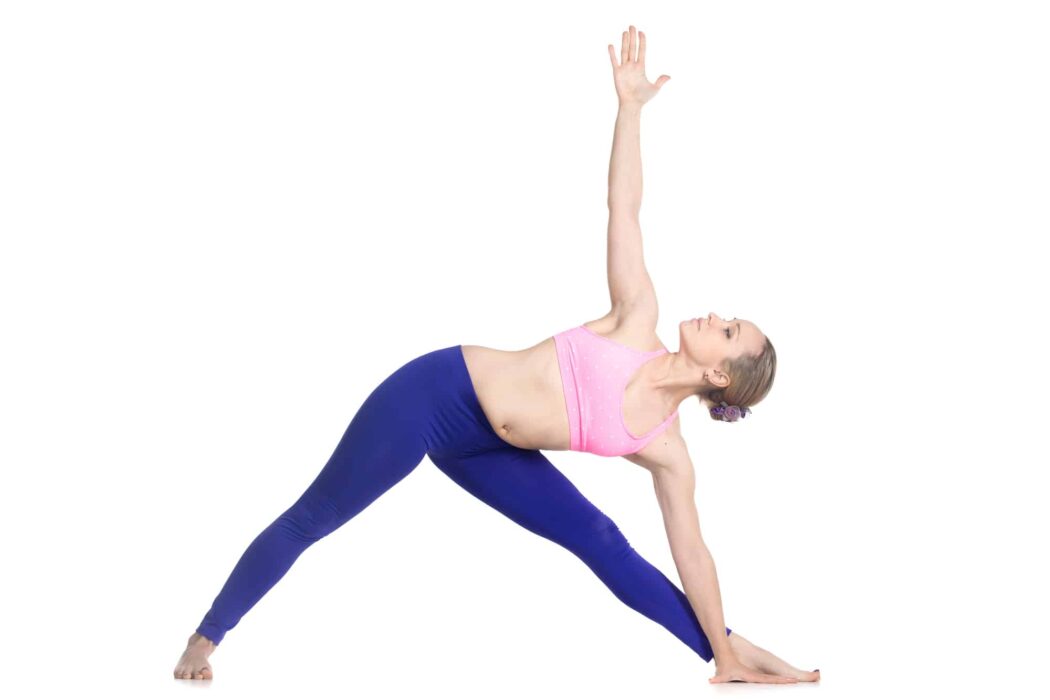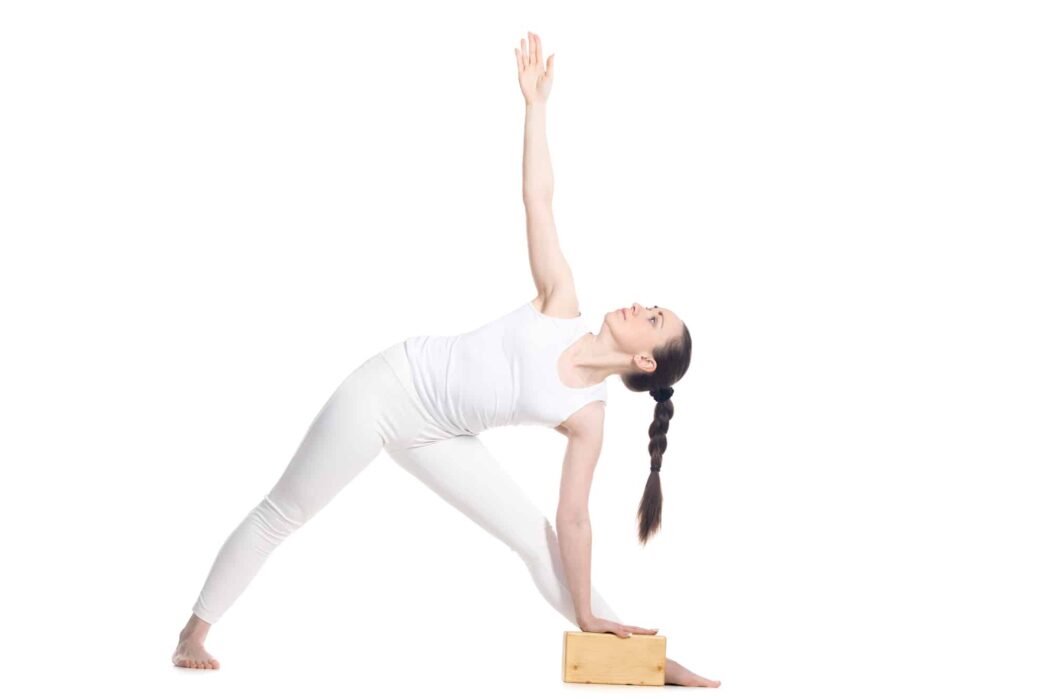
उत्थित त्रिकोणासन;
Utthita Trikoṇāsana: utthita = extended; trikona = three angle or triangle
Triangle pose stands in line with Plank and Tree poses to build strength in legs and start developing balancing skills. If you are a beginner, you will practice it often in your yoga class. Although it may seem doable, there are some key points to pay attention to.
How to Get Into It
There is no one way to enter the Triangle pose. You can also practice it separately or combined in a sequence with other standing poses.
- Start standing at the front end of your mat. Give yourself a few breaths to concentrate and settle before you move into the pose. Press palms together in the Anjali mudra (praying sign).
- As you inhale, make a wide step to the right with your right foot. Align your soles, so they are parallel with each other. For some, it will be more convenient to turn toes slightly inwards. Press the soles tightly to the mat.
Tip: to engage legs more – try to push your legs to the sides as if you were trying to tear your mat with them. - Lift your hands to the sides, creating the “5 angle star” shape with your whole body. Palms facing down, hands are in line with shoulders and parallel to the floor.
- As you inhale, turn your right toe to the right, and left one – at 45°, slightly inwards. Booth heels are on one line.
- Next, stretch to the right with your right hand and try to lengthen both sides of your core. Please don’t turn your pelvis to the right; make sure you keep it in the same position and let only the upper body stretch and move.
- On the next inhale, drop your right hand down until you reach your ankle. Turn shoulders perpendicular to the floor and let your left shoulder and hand stack into the ceiling. Gaze up. Do not squeeze the neck too much with the shoulders, but keep opening the chest. Stretch the BOTH sides of your torso.
Stay for 3-5 breathing cycles and repeat on another leg.
Benefits
- Strengthens thighs, ankles and opens hips
- Engages core and improves of the back, front and side muscles
- It opens the chest and makes shoulders more flexible
- Improves overall balancing skills and prepares you for more challenging balance poses.
Modifications
Beginners: If you have trouble reaching the ankle as you lean down, use a block to put your hand on it.

Pro: If your hips have enough flexibility – place your right hands directly on the floor under your shoulder. And use it as a lever arm to open the chest more.
Roll your left hand behind your back and turn your left shoulder more up to the ceiling.
Challenge your core with dynamic inclines to the right leg and up to the center.
Revolved Triangle Pose (Parivrtta Trikonasana)
Precautions
It is not recommended to practice for those with recent surgery or injury in shoulders, hips, or knees.
Common Mistakes
Resting Your Right Hands on the Knee or Ankle
It is tempting to put your hand on the right leg for support and shift the torso weight on it when you try to withstand the pose. However, this can turn off the necessary muscles of your legs. To prevent this, use a block or try to hold your body with the torso’s side muscles and abdominals.
Knee Hyperextension
If you try to keep your right leg super straight – you risk overloading your knee due to the excess pressure on the joints that support it. To avoid this, soften the right knee a bit but don’t bend the leg.
Neck Issues
Don’t squeeze your neck with shoulders and send them away from your ears; try to relax the upper back while in the pose. If you feel dizzy – gaze down on your right sole. The same is a safer variation for those with neck issues.